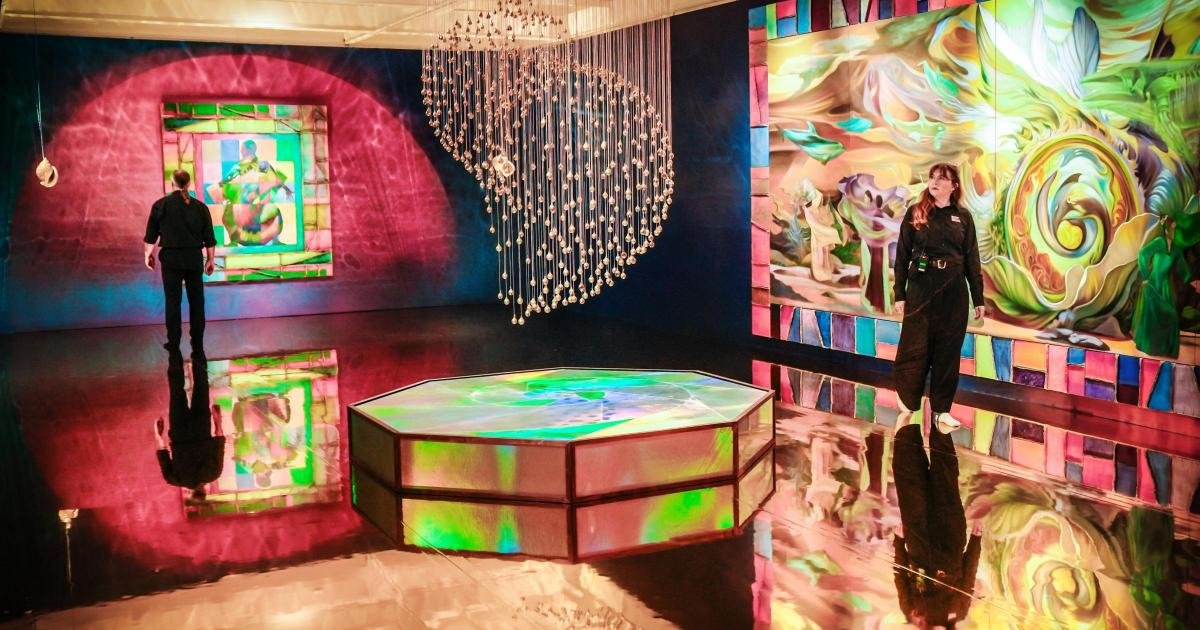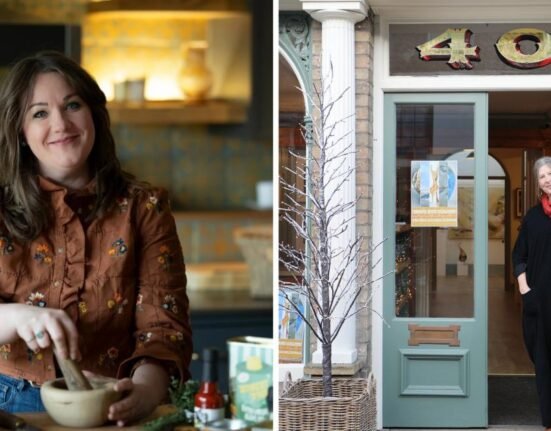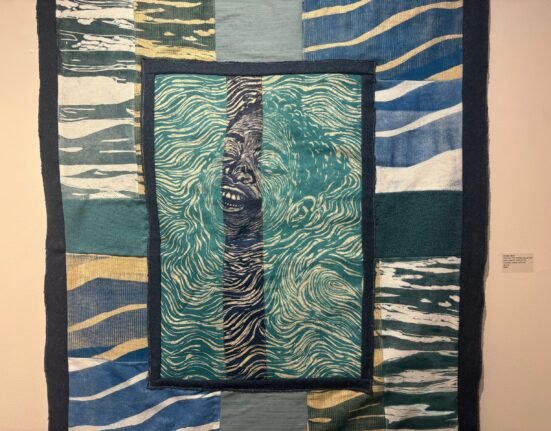The finalists’ entries are on display in the Manningham gallery until February 22, a highlight of Bradford’s year as UK City of Culture.
This is the first time the Turner Prize – the world’s leading prize for the visual arts – has come to West Yorkshire. The exhibition is expected to attract more than 100,000 people to Bradford.
Darren Henley, Chief Executive of Arts Council England, said it’s fitting that Cartwright Hall – “a place that once inspired a young David Hockney” – is hosting the Turner Prize exhibition. The finalists – Nnena Kalu, Rene Matic, Mohammed Sami and Zadie Xa – are showcased in four sections of the gallery, with pieces ranging from immersive light and sound installations to powerful photography and paintings.
The Turner Prize aims to promote debate around new developments in contemporary art. Shanaz Gulzar, Creative Director for Bradford 2025, says: “Audiences will make their own mind up – that’s what art is. This year’s show is breaking boundaries; these four artists are so diverse and each of them is pushing boundaries of art.
“Art is a fundamental right of every single person. ‘Surprise yourself’ has been a theme of this City of Culture year and it’s been an absolute joy to see people doing just that. The Turner Prize represents the boldest, most exciting contemporary art and we’re thrilled to welcome it to Bradford. This show will inspire conversation, connection and a space for reflection.
“We’ve got the best of Great British art here in Bradford – the people of the city don’t have to travel three hours to see it. To see it here on their doorstep is incredibly powerful.”
Helen Legg, Director of Tate Liverpool, who helped to organise the exhibition, said: “It is so important that the Turner Prize moves around the UK. Artists are given a significant platform and communities around the country are given an opportunity to see the latest developments in contemporary arts right on their doorstep.
“This year is the 250th anniversary of the birth of Turner (the prize is named after visionary painter JMW Turner). We’re celebrating his legacy with this new generation of artistic talent.”
* Nnena Kalu is an autistic, learning disabled artist with limited verbal communication. Her practice is supported by visual arts organisation ActionSpace.

Kalu’s nomination, described as a “watershed” for the Turner Prize, is a series of colourful structures wrapped in knotted streams of vivid repurposed fabric, rope, ribbon, cling film, paper and VHS tape. Alongside the sculptures, which hang from the ceiling and resemble creatures and cocoon-like forms, is a selection of drawings of swirling, overlapping lines.
* Rene Matic uses photography, sculpture, textiles, sound, moving image and writing to reflect on identity, community and love.Their work captures scenes from everyday life, subcultures and their own background to ask questions about race, gender, class and nationality.
Matic’s nomination, As Opposed to the Truth, uses sound, photography and fabric installations to explore themes of belonging, identity, political hypocrisy and relationships, conveying broader experiences of a young generation through a compelling body of work. In the centre of the room hangs a white flag bearing the words ‘no place’ and ‘for violence’, quoting American political leaders in the wake of the attempted assassination of Donald Trump in 2024. Matic points to contradictions between political words and actions at a time of rising global conflict.

Other works explore notions of care and the reality of the human experience; Restoration is a collection of Black dolls, many broken, abandoned and salvaged by the artist. Photo collage Feelings Wheel blends imagery and sounds referencing protest, relationships and fractured realities of contemporary life.
* Zadie Xa creates installations using painting, sound, textiles and sculpture, drawing on her Canadian ancestry, Korean mythology and natural and supernatural worlds.

She’s nominated for Moonlit Confessions Across Deep Sea Echoes: Your Ancestors Are Whales and Earth Remembers Everything – exploring links between ocean life, grief, shamanism and ghostly spirits. At the centre of the gallery hangs hundreds of bells forming the shape of a shell. The ringing of bells in Korean culture can be used to attract or repel spirits.

On the walls brightly coloured artwork depicts the sun and moon in rise and fall. In each corner of the room is a hanging shell with soundscapes – birds, water and human voices. The floor is reflective, giving the impression of walking on water. Xa invites us to consider the state of the ocean and what its inhabitants would say if they could speak.
* Mohammed Sami is nominated for After the Storm: Mohammed Sami at Blenheim Palace, a powerful representation of war and exile. The 18th century palace, built to reward the military triumphs of the Duke of Marlborough, is adorned with art that can be seen as glorifying warfare and power – a viewpoint Sami challenges.

Works include Reborn, the semi-erased portrait of a military figure, hinting at the threat of authoritarianism.
* The Turner Prize winner will be announced on December 9 at a ceremony at Bradford Grammar School. Tickets for the exhibition are free, but need to be booked at bradford2025.co.uk/programme/turner-prize-2025







